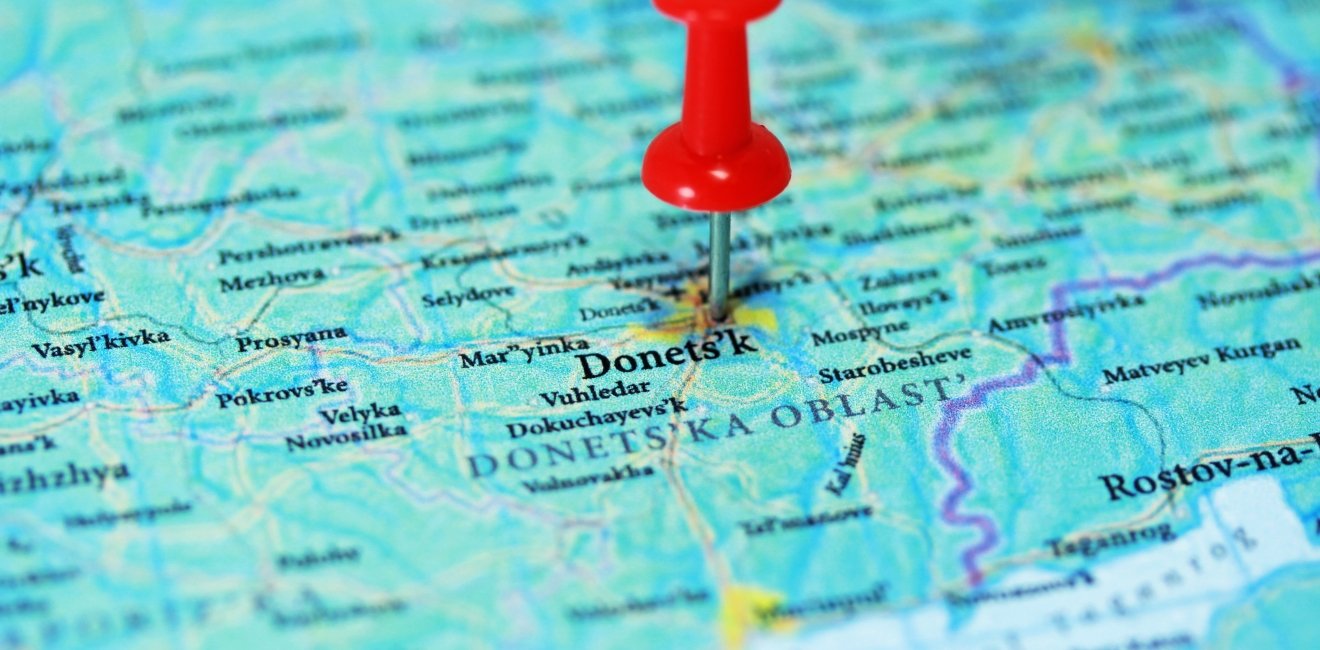
A blog of the Kennan Institute
BY MIKHAIL MINAKOV
On February 15, 2022, deputies of the State Duma of the Russian Federation supported the draft resolution “On the State Duma appeal ‘To the President of the Russian Federation Vladimir Putin on the necessity to recognize the Donetsk People's Republic and Luhansk People's Republic.’” In particular, the resolution states that the Duma deputies consider recognition of the self-proclaimed Donetsk and Luhansk “people's republics,” or the DPR and LPR, “to be legally justified and morally sound.” Although during a press conference that same day with German Chancellor Scholz, Vladimir Putin did not support recognition of these units on Ukraine’s non-controlled territory, the many reservations in his speech suggest that the “people's republics” card will continue to be played.
It is important to note that after the disruption of the gradual quieting down in the Donbas in the winter of 2020–21, a group promoting the idea that the self-proclaimed republics should develop as “Russian national states” has become increasingly important in Moscow since those entities could eventually become part of the supranational organization the Union State of Russia and Belarus. The fact that President Putin did not support the Duma's appeal on February 15, mentioning only his “hope … that the Minsk agreements would be implemented,” does not mean that the Kremlin will not continue to support the existence and development of the DPR and LPR until it can recognize them, as was done in the case of Georgia’s two breakaway units, Abkhazia and South Ossetia.
It is clear that recognition of the self-proclaimed Donbas republics would cost Russia dearly in the current context. In response to such a move, Western governments would impose new and tougher sanctions, undermining Russia's socioeconomic stability, while Ukraine would get a legitimate chance to abandon the Minsk agreements and emerge with new opportunities in international politics. Recognition would intensify the antagonism between Russia and the West, something the Kremlin does not appear to be planning right now.
Secession, or the separation of part of a state’s population and territory from the parent state with the aim of creating an independent state, is a rare but not unprecedented political event. Sometimes secession leads to recognition of the sovereignty and independence of the separated parts, such as the North American colonies of Britain, which became the United States of America, or the republics of the USSR, which became recognized independent states.
Quite often, however, secession is the result of external intervention rather than of the desire of the population to live separately. Some examples are the Nagorno-Karabakh Republic of Artsakh, the Turkish Republic of Northern Cyprus, and, potentially, the LHR and DPR. In such a case, a “secession triangle” emerges, a complex, conflict-prone relationship between the parent state, the sponsor state, and the self-proclaimed statelet.
In this triangle, the parent state finds itself in a state of “damaged sovereignty” whereby the government is unable to regain control of its citizens and its internationally recognized territory and cannot fully implement its constitution with respect to citizens living in the non-controlled territory. Damaged sovereignty of the parent state means that it partially fails to fulfill the basic functions of the state as defined by the 1933 Montevideo Convention on the Rights and Duties of States. Thus the parent state: (1) is not fully capable of defending its territory against other states, (2) is not fully capable of ensuring the supremacy of power and a monopoly on the legitimate use of violence against its population, (3) has a government that provides unique public services, but not to all citizens, and (4) enters into relations with other states from a weakened position.
Ukraine, Georgia, and Moldova are examples of states whose sovereignty is systematically violated by the presence of self-proclaimed republics on their internationally recognized territories. To compensate in part for the damage to the parent states, international law provides for sanctions against secessionists and support for parent states in their claims to reintegrate illegally seceded communities. A recent example of such support is found in the U.S. response to Russian security claims, namely, that Russia withdraw from the territories of Georgia, Moldova, and Ukraine.
A self-proclaimed statelet (or de facto state, or parastate) is only partially capable of performing the functions of the state. Being in existential conflict with the parent state, the parastate is mired in a military-political conflict (“hot” or “frozen”) on its unstable borders, is constantly competing for the loyalty of its population, and is able to provide only low-quality government services. Furthermore, it remains outside interstate relations. The de facto state is flawed both in terms of its efficacy and in terms of unrecognized sovereignty. The situation in the LPR and DPR is quite consistent with this picture.
Parastates can exist for a long time only with the support of the sponsor state. This sponsorship may take the form of “supplementing sovereignty” (when the sponsor represents the parastate on the international scene), providing weapons and military advisers (to maintain the parastate’s borders), and funding the parastate’s budget. The Russian Federation performs all these functions with regard to the self-proclaimed Donbas republics.
Yet Russian sponsorship goes far beyond the Donbas. Since the early 1990s, the Kremlin has created a network of de facto states in Eastern Europe, which until 2014 included South Ossetia, Abkhazia, and Transnistria, with a population totaling up to one million people. By the beginning of the war in the Donbas, these parastates and the Russian Federation had created a military-political and socioeconomic model that allowed them to survive in the face of conflict with their parent states and international sanctions. And this model has been applied to the de facto state-building on Ukrainian soil in the Donbas, so that today the parastate network overseen by Russia is populated by more than four million Eastern Europeans. The Kremlin's military, political, and financial investment in this network pays off in that the parent states find themselves strategically tied to intractable conflicts and limited in their ability to join alliances such as the EU or NATO.
The Russian State Duma’s decision is an act that deepens the damage to Ukrainian sovereignty and increases the Kremlin's strategic options in conflict with Ukraine and the West. De-escalation on the Ukrainian-Russian border may be in the offing, but the systemic conflict in Eastern Europe continues to expand.
The opinions expressed in this article are those solely of the authors and do not reflect the views of the Kennan Institute.
Author


Kennan Institute
After more than 50 years as a vital part of the Wilson Center legacy, the Kennan Institute has become an independent think tank. You can find the current website for the Kennan Institute at kennaninstitute.org. Please look for future announcements about partnership activities between the Wilson Center and the Kennan Institute at Wilson Center Press Room. The Kennan Institute is the premier US center for advanced research on Eurasia and the oldest and largest regional program at the Woodrow Wilson International Center for Scholars. The Kennan Institute is committed to improving American understanding of Russia, Ukraine, Central Asia, the South Caucasus, and the surrounding region through research and exchange. Read more

Explore More in Focus Ukraine
Browse Focus Ukraine
Talking to the Dead to Heal the Living

Ukrainian Issue in Polish Elections


